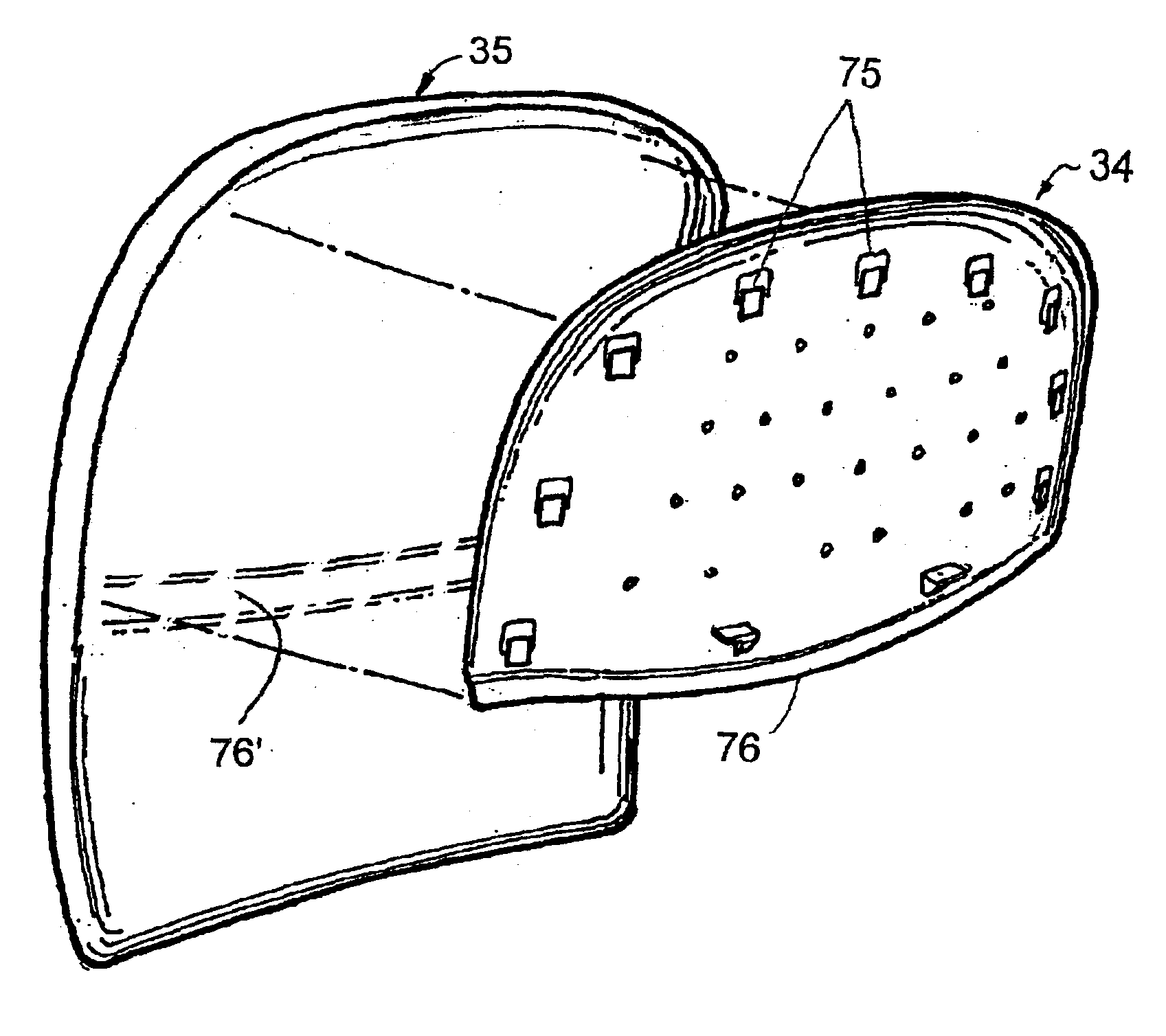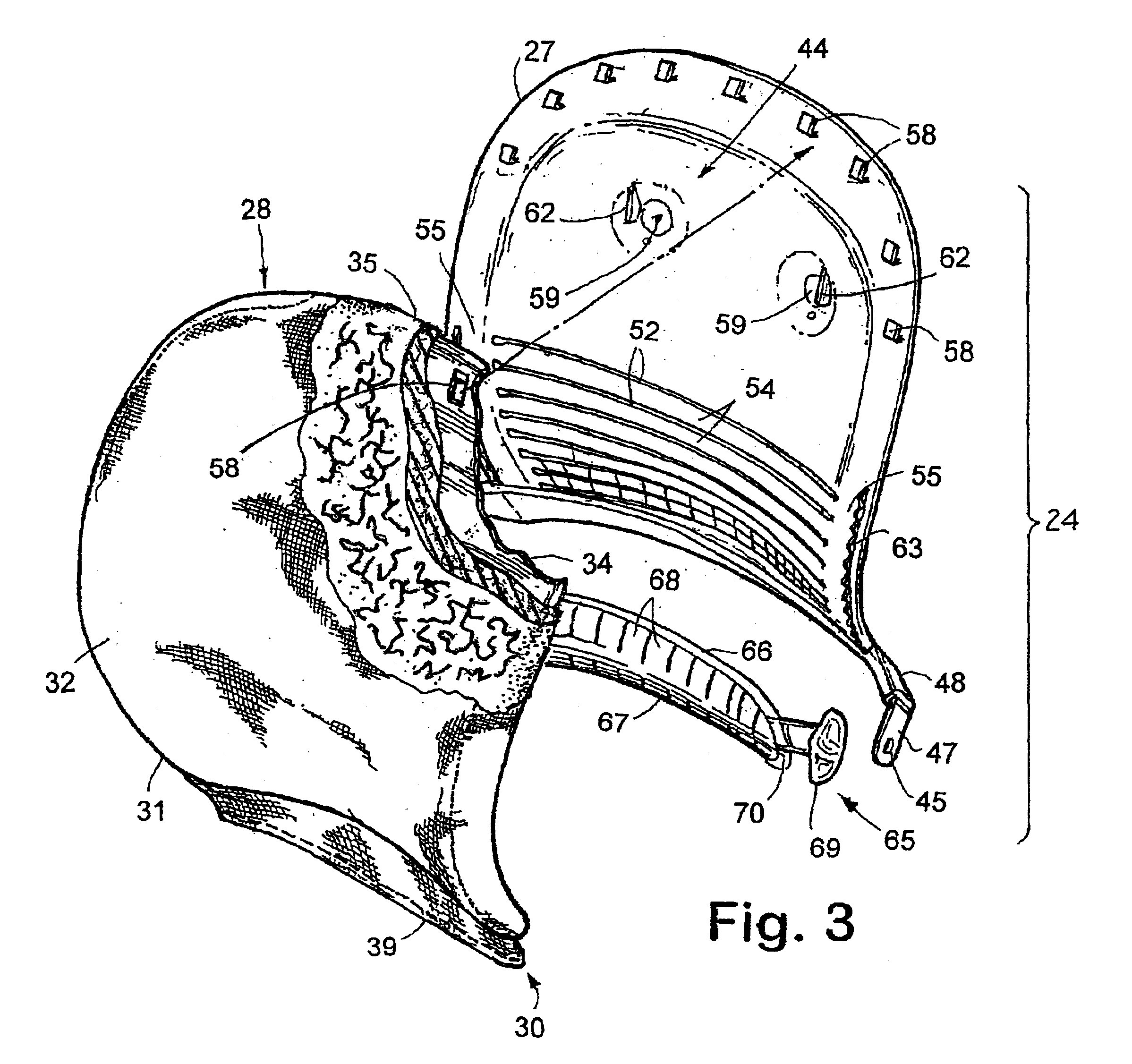Method of manufacturing cushion construction for seating unit
- Summary
- Abstract
- Description
- Claims
- Application Information
AI Technical Summary
Problems solved by technology
Method used
Image
Examples
Embodiment Construction
[0021]A chair 20 (FIGS. 1 and 2) embodying the present invention includes a base 21, a back upright or arch-shaped back frame 22, a seat 23, and a back construction 24. The base 21 includes a control housing 25, with fixed side support structures 26 extending laterally and upwardly from the control housing 25. The back upright 22 is movable between an upright position and a reclined position. The back construction 24 (FIG. 3) includes a back support shell 27 (also referred to as a “back support”) attached to the back upright 22 (FIG. 4), and further includes a cushion assembly 28 (FIG. 3) attached to the back support shell 27 with quick-attach hooking top connection 29 and a “zip-lock” type bottom connection 30. The cushion assembly 28 includes a cover assembly 31 (FIG. 8) having an upholstery front panel 32 and a rear panel 33 forming a sock that can be inverted and “pulled” upwardly onto a cushion 35 and cushion stiffener 34 as the cover assembly 31 is inverted. The rear panel 33 ...
PUM
| Property | Measurement | Unit |
|---|---|---|
| Density | aaaaa | aaaaa |
| Tension | aaaaa | aaaaa |
Abstract
Description
Claims
Application Information
 Login to View More
Login to View More - R&D Engineer
- R&D Manager
- IP Professional
- Industry Leading Data Capabilities
- Powerful AI technology
- Patent DNA Extraction
Browse by: Latest US Patents, China's latest patents, Technical Efficacy Thesaurus, Application Domain, Technology Topic, Popular Technical Reports.
© 2024 PatSnap. All rights reserved.Legal|Privacy policy|Modern Slavery Act Transparency Statement|Sitemap|About US| Contact US: help@patsnap.com










